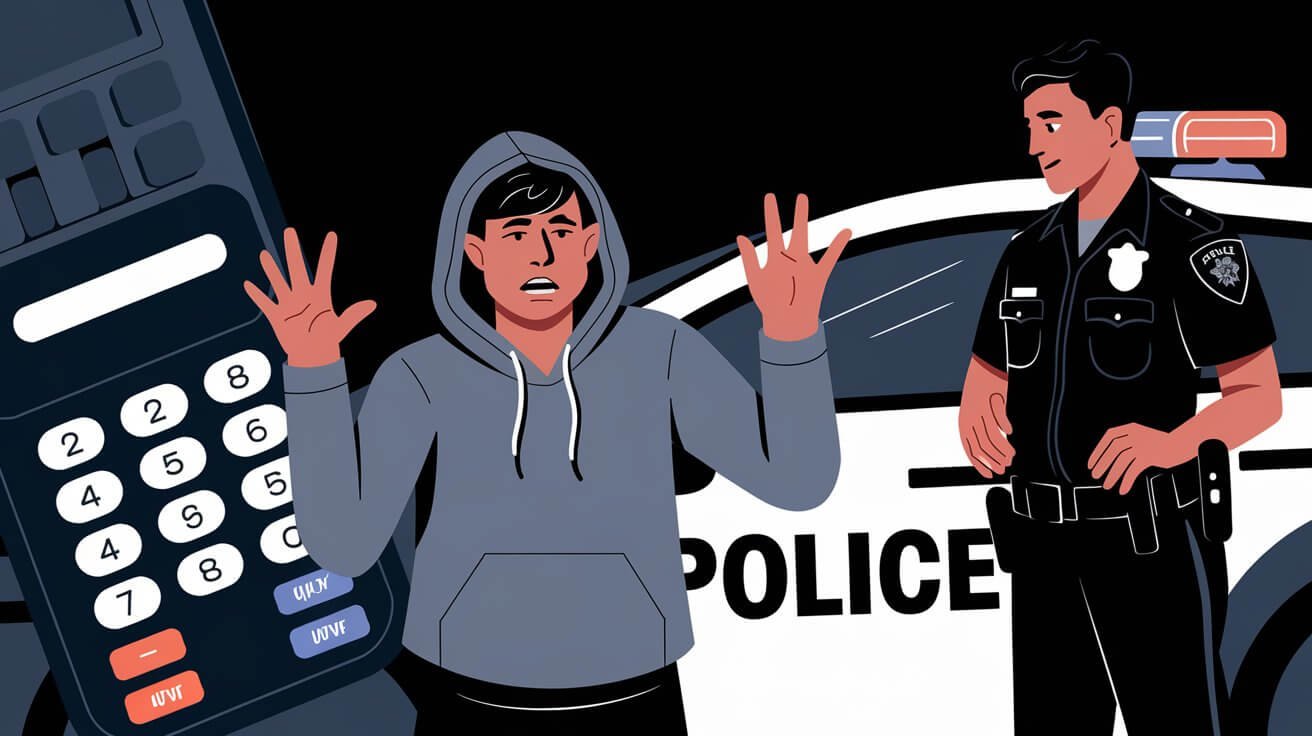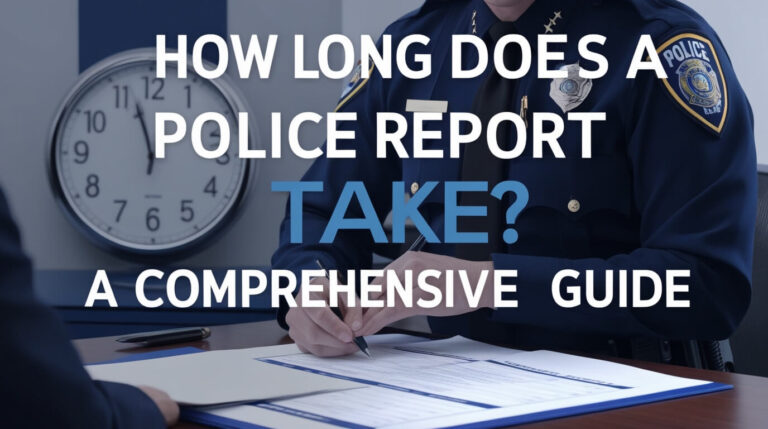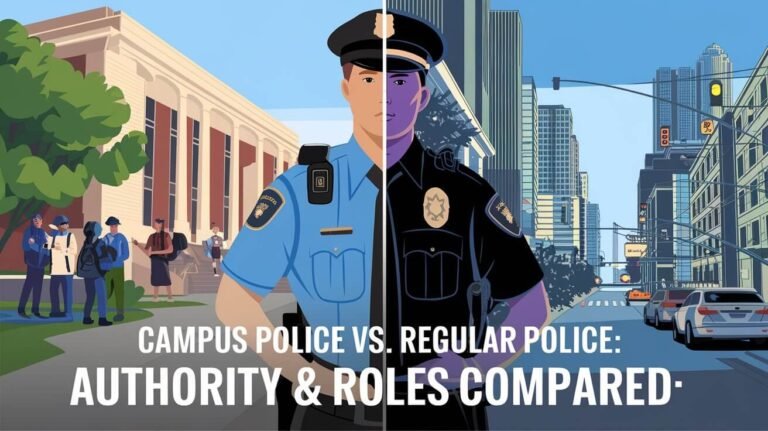If Someone Threatens To Kill You What Can The Police Do?

Imagine someone staring at you and saying, “I’m going to kill you.” How would you feel? Would you be scared and not know what to do? Threats like these are serious crimes that police take very seriously.
But what can the police do to keep you safe? Let’s look at the legal protections and police strategies when faced with threats to your life.
Types of Criminal Threats and Their Legal Definitions
Threats in criminal law vary, each with its own legal weight. It’s key for victims and law enforcement to grasp these differences. This knowledge helps in tackling these issues effectively.
In-Person Threats and Physical Intimidation
In-person threats are among the most severe. In Connecticut, threatening someone with a hazardous substance is a serious crime. It aims to terrorize, cause evacuation, or disrupt public life.
Threatening someone in a less severe way is also a crime. It involves using physical threats to scare someone into fearing serious harm.
Electronic and Phone-Based Threats
The rise of digital threats is a new challenge. Perpetrators use emails, texts, and social media to threaten. These threats are easier to prove because they leave a digital trail.
Yet, verbal threats can be harder to prove. They rely on the victim’s word alone.
Hate Crime Related Threats
Threats based on bias or prejudice are hate crimes. They target a person’s race, religion, or sexual orientation. These threats are taken very seriously.
They harm not just the individual but also the community. The penalties for hate crimes are harsh, reflecting their severity.
Criminal threats are always taken seriously by the law. Victims and law enforcement must work together. They aim to keep everyone safe and ensure justice is served.
Immediate Steps to Take When Someone Threatens Your Life
When someone threatens your life, acting fast is key. Your first step should be to make sure you’re safe and get help. Here’s what to do:
- Find a safe place. Move away from the threat and go somewhere safe, like your home or a public area.
- Stay calm. It’s hard, but try to keep your cool. Your safety is most important.
- Call 911 for emergency response. Call the police right away and tell them about the threat. Give them all the details you can, like who made the threat and where you are.
- Document the threat, if safe to do so. If you can, quietly collect evidence like screenshots or notes. This helps the police.
Don’t try to fight back or respond to the threat. Your safety is the main thing. If you can, get help from others or the police. Only defend yourself if you really have to.
Acting quickly and documenting the threat can help a lot. By following these steps, you can stay safe and get the help you need.
If Someone Threatens To Kill You What Can The Police Do
When someone threatens to harm you, the police must act. They start by investigating and taking steps to keep you safe. This includes gathering evidence, documenting threats, and setting up emergency protection.
Police Investigation Process
When a death threat is reported, the police start a criminal investigation. They look for physical evidence like written or recorded threats. They also talk to witnesses to build a case against the threatener.
Evidence Collection and Documentation
It’s important to document threats well. Victims should save all threatening messages. This includes voicemails, emails, and text messages. The police might also search for more evidence.
Emergency Protection Measures
For a credible threat, the police take quick action. They might arrest the threatener without a warrant if they’ve broken a protective order. The police can also help you find a safe place or get an emergency restraining order. These steps help keep you safe while they investigate.
Legal Protections and Restraining Orders
When someone threatens to harm you, the law steps in with restraining orders and DVPOs. These legal tools can stop the threatener from contacting you. They can also make them leave your home and stay away from your work and kids’ schools.
To get a protective order, you need to file a petition with the court. The court can quickly set up temporary protections. Then, they schedule a hearing to decide on long-term safety measures.
This hearing lets the court look at the evidence. They decide how much protection you need to stay safe.
- Domestic violence restraining orders can stop the abuser from bothering you. They can also affect child custody, support, and gun rights.
- Getting a restraining order is free. You can do it yourself or with a lawyer’s help. Local Self-Help Centers offer support.
- If the order is granted, police can enforce it. If the offender doesn’t follow it, they could face legal trouble.
Protective orders are key to keeping you safe from threats. By using the legal system, you can get the protection you need. This helps keep you and your loved ones safe from harm.
Criminal Charges for Death Threats
Making death threats is a serious crime with big legal consequences. The charges and penalties vary by state. But, these threats are usually seen as either a misdemeanor or a felony.
State-Specific Legal Consequences
In California, death threats are covered under Penal Code 422 PC. For misdemeanor threats, you could face up to 1 year in jail and fines up to $1,000. Felony threats can lead to 16 months to 3 years in prison and fines up to $10,000, plus an extra year if a weapon was used.
Federal Law Violations
Some death threats might also break federal laws. This is true if the threats were made across state lines or through the internet. Federal charges can mean longer prison times and bigger fines.
Prosecution Process
- The prosecution must show the defendant threatened to kill or harm someone, with the goal of scaring the victim.
- They need to prove the threat was clear, the victim was genuinely scared, and the defendant could carry out the threat.
- Verbal, written, or electronic threats can be considered criminal, based on the situation and how believable they seem.
Skilled criminal defense lawyers can help build a strong defense. They can challenge the prosecution’s evidence and fight for lighter charges or even dismissal. The outcome depends on the case’s details and the evidence’s strength.
Police Enforcement of Protective Orders
Law enforcement is key in protecting people from threats. They enforce protective orders, also known as Domestic Violence Protection Orders (DVPOs) or 50Bs. These orders keep victims safe by stopping the threatening party from contacting them or going to certain places.
Police can arrest someone right away if they break a protective order. They don’t need a warrant for this. This quick action makes these orders more effective and keeps the victim safe. Police also help serve the order and can take the victim to a safe place if needed.
Threats to kill are taken very seriously by the courts. They quickly give temporary protection to victims. Breaking a protective order can lead to immediate arrest, without a warrant. This shows how seriously law enforcement and courts take order violations and arrest powers to protect people from law enforcement.
Protective orders are a vital tool against domestic violence. They let victims get legal protection against threats and violence. Law enforcement’s role in enforcing these orders is essential for keeping victims safe.
Documenting and Reporting Threats
When threats to your safety happen, it’s key to document them well. Collecting evidence helps law enforcement take action. Save messages, take screenshots, and record calls if it’s legal.
Recording Evidence of Threats
It’s vital to document threats carefully. Save texts, emails, and social media posts with threats. Take screenshots or make copies. If threats come by phone, record the call if it’s legal.
Filing Police Reports
After gathering evidence, file a police report. Share the details of the threats, like when and what was said. Show the evidence you have, like printed messages or recordings. Work closely with the police to help solve the case.
Working with Law Enforcement
Working with the police is important. Keep in touch with the officers and share more info or evidence. Keep updated on the case and be ready to testify if needed. Your help is key to solving the case.
| Threat Type | Legal Consequences |
|---|---|
| Death threats | Up to 4 years in prison in California |
| Threats against public officials | Up to 6 years in prison |
| Threats to cause building evacuation | Up to 8 years in prison |
Documenting threats well, filing reports, and working with the police, you can help keep yourself safe. This approach can lead to a successful outcome in court.
Safety Planning and Protection Strategies
Dealing with threats can be very scary. But, making a detailed safety plan is key for staying safe. This means looking at your own risks, making your home and work places secure, and having emergency contacts ready.
First, figure out what kind of threat you’re facing. Think about who is making the threats, why they are doing it, and if they’ve been violent before. Knowing this helps you know how to stay safe.
- Keep a record of any threats, like when and what was said.
- Tell the police about the threats and work with them to keep you safe.
- Make your online accounts safer by changing passwords and watching your online activity.
- Change your daily habits and how you travel to avoid being found easily.
But safety planning isn’t just about physical danger. It’s also about emotional, financial, and social risks. If you’re facing language barriers, immigration issues, or don’t know your legal rights, get help. Reach out to domestic violence services, victim advocates, and people you trust in your community.
| Safety Strategy | Potential Benefits |
|---|---|
| Developing a tailored safety plan | Addresses individual risks and concerns |
| Enhancing digital and home security | Reduces perpetrator access and increases personal control |
| Engaging with law enforcement and support services | Provides legal protections and access to resources |
| Altering daily routines and travel patterns | Disrupts predictability and minimizes opportunities for confrontation |
Being proactive and taking steps to protect yourself, you can feel more in control. Always stay alert and update your safety plans as needed. This is how you can face threats and stay safe.
Final Thoughts
Dealing with death threats needs a full plan. This includes the police, legal help, and steps to stay safe. Knowing what resources and legal steps are available helps people take action and protect themselves.
The police are key in looking into threats, gathering evidence, and making sure orders are followed. But, victims must also report incidents and take safety steps. Laws like restraining orders and criminal charges help keep people safe from harm.
Staying alert, keeping records of threats, and working with the police are important. Talking to a criminal law attorney can also help. They can explain your rights and look into ways to get compensation for emotional harm or get injunctions.
FAQs
If someone threatens to kill me, what can the police do?
Police take death threats seriously. They can start an investigation and gather evidence. They also take steps to protect you.
What are the different types of criminal threats and their legal definitions?
There are many types of threats, like in-person threats or threats on social media. Each has its own legal meaning and penalties.
What are the immediate steps I should take if someone threatens to kill me?
First, find a safe place and stay calm. Call 911 and document the threat if it’s safe. Don’t talk back to the threatener and get help.
How do the police respond to death threats?
Police start an investigation and gather evidence. They also take steps to protect you. They can arrest the threatener without a warrant if needed.
What legal protections are available against threats?
You can get a restraining order to keep the threatener away. The court can act fast to protect you.
What are the criminal charges and consequences for making death threats?
Death threats are a serious crime. You could face big fines and jail time. The government will need to prove the threat was real.
How do the police enforce protective orders?
Police can arrest someone right away if they break a protective order. This makes the order more effective.
How do I properly document threats for legal action?
Save messages, take screenshots, and record calls if you can. Write down everything in a police report. This helps build a strong case.
What safety planning and protection strategies should I consider?
Make a safety plan by looking at your risks and taking steps to protect yourself. Change your routine, improve your online security, and work with the police.






